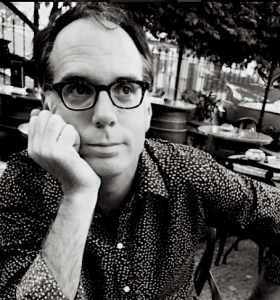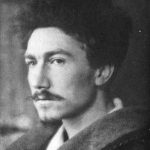

During the early 20th century avant-garde countries like France, Italy, Russia, and Germany provided fertile ground for manifesto writing: Dada, Surrealism, and myriad Futurisms all were born out of this rich soil – or, more fittingly, the ‘good factory muck’ of Marinetti. Other countries, including Britain, were less fortunate. As the English Surrealist David Gascoyne wrote in his notebook, ‘the island’s damp climate extinguishes the fuses’.

There were exceptions, of course – significant ones. (My essay in the latest issue of Modernist Cultures tells the whole story.) Whistler, Wilde, and Yeats in the 1890s; Patrick Geddes and Hugh MacDiarmid in Scotland; Wyndham Lewis and Ezra Pound; Dora Marsden and Virginia Woolf; Auden, MacNeice, and Spender. Although there were many women writing powerful manifestos outside Britain and Ireland in the modernist period (Mina Loy, Valentine de Saint-Point, Laura Riding, Baroness Elsa von Freytag-Loringhoven), with the exception of the Suffragettes, programmatic and polemical writings by women writers in those islands were relatively few.
Top 10 Modernist Manifestos from Britain and Ireland
- Karl Marx and Friedrich Engels, The Communist Manifesto (1848). A fundamental text for both modernism and the manifesto, the ‘first great modernist work of art’ (as Marshall Berman called it) was initially published in London by the German Workers’ Education Association. A bit of a stretch, perhaps, but a meaningful one – not least because most of the manifestos that follow were written by expatriates.
- James McNeill Whistler, Mr. Whistler’s ‘Ten O’Clock’ (1885). The yellow pamphlet with the butterfly signature contained the text of Whistler’s famous lecture on aestheticism. Rather than rally support, Whistler encouraged the public and critics to take no interest in the artist’s business.
- Oscar Wilde, ‘The Soul of Man Under Socialism’ (1891). Wilde’s most famous statement of principles is the ‘Preface’ to The Picture of Dorian Gray (1891), with its declaration that ‘All art is quite useless’. ‘The Soul of Man’, from the same prolific year, shows a different Wilde. The politically engaged Wilde embraces a 21st century vision of fully automated luxury communism, with robot slaves allowing everyone to do what Wilde himself did – reflect on beauty, and create.
- Patrick Geddes, ‘The Scots Renascence’, Evergreen, 1 (1895). The announcement of an earlier Scottish cultural flourishing, based in Edinburgh’s Old Town.
- William Butler Yeats, Lady Gregory, and Edward Martyn, ‘Manifesto for the Irish Literary Theatre’ (1897). The foundation text of the Irish National Theatre, which eventually led to the opening of the Abbey Theatre in Dublin in 1904.

Ezra Pound by Alvin Langdon Coburn, collotype, 22 October 1913 - Ezra Pound, ‘A Few Don’ts by an Imagiste’, Poetry (1913). The ‘don’ts’ Pound gives to would-be poets are narrowly concerned with his short-lived Imagist movement, but more broadly (and influentially) with the shape of modern poetry. For example: ‘Use no superfluous word’, and ‘Go in fear of abstractions’. The many examples provide a diverse reading list.
- Wyndham Lewis, Ezra Pound, Edward Wadsworth, William Roberts, Helen Saunders, Lawrence Atkinson, Jessica Dismorr, and Henri Gaudier-Brzeska, ‘Vorticist Manifesto’, Blast, 1 (1914). Vorticism is the most lasting template for an English avant-garde, and the manifestos in Blast, which represent both an emulation and refutation of Futurism, are full of aggressive, proto-punk energy.
- Hugh MacDiarmid, ‘The Chapbook Programme’, Scottish Chapbook (1922). The cover of the Chapbook declared, ‘Not Traditions – Precedents’. It was here that the militant MacDiarmid fired his first volley for a new Scottish Literary Renaissance.
- Nancy Cunard (ed.), Authors Take Sides on the Spanish War (1937). The Left Review pamphlet gathered 148 mini-manifestos from authors declaring their political sympathies – for the Republic and against Franco; for Franco and Fascism; or ‘neutral’ – on the Spanish Civil War. Opinion was overwhelmingly anti-Fascist with a few notable divergences from the likes of Pound and Evelyn Waugh. Samuel Beckett’s terse but powerful ‘¡UPTHEREPUBLIC!’ is a highlight.
- Virginia Woolf, Three Guineas (1938). ‘Set fire to the old hypocrisies.’ While ‘A Room of One’s Own’ (1929) is the more famous text, Woolf’s incendiary late manifesto is even more powerfully resonant today.








